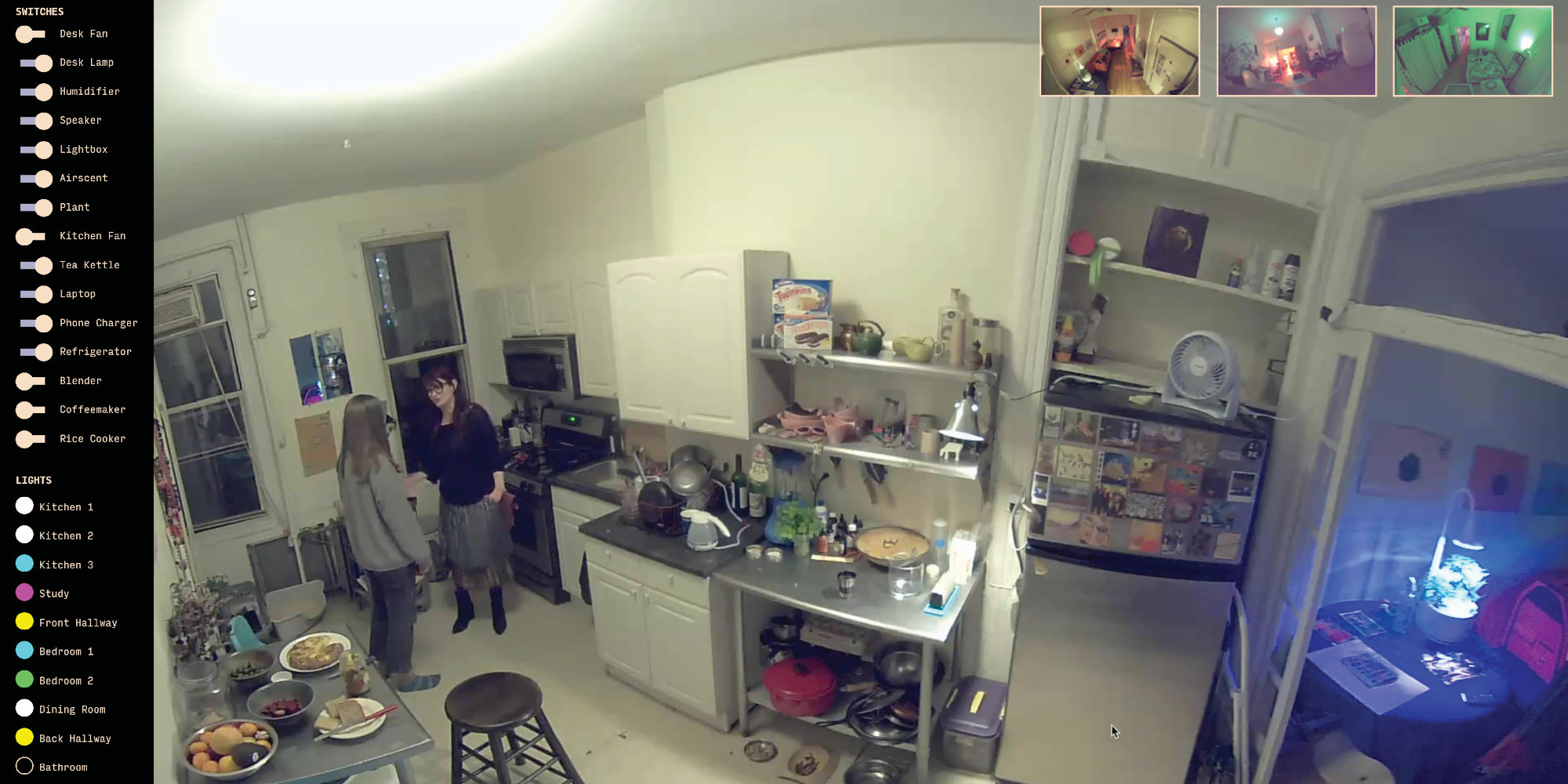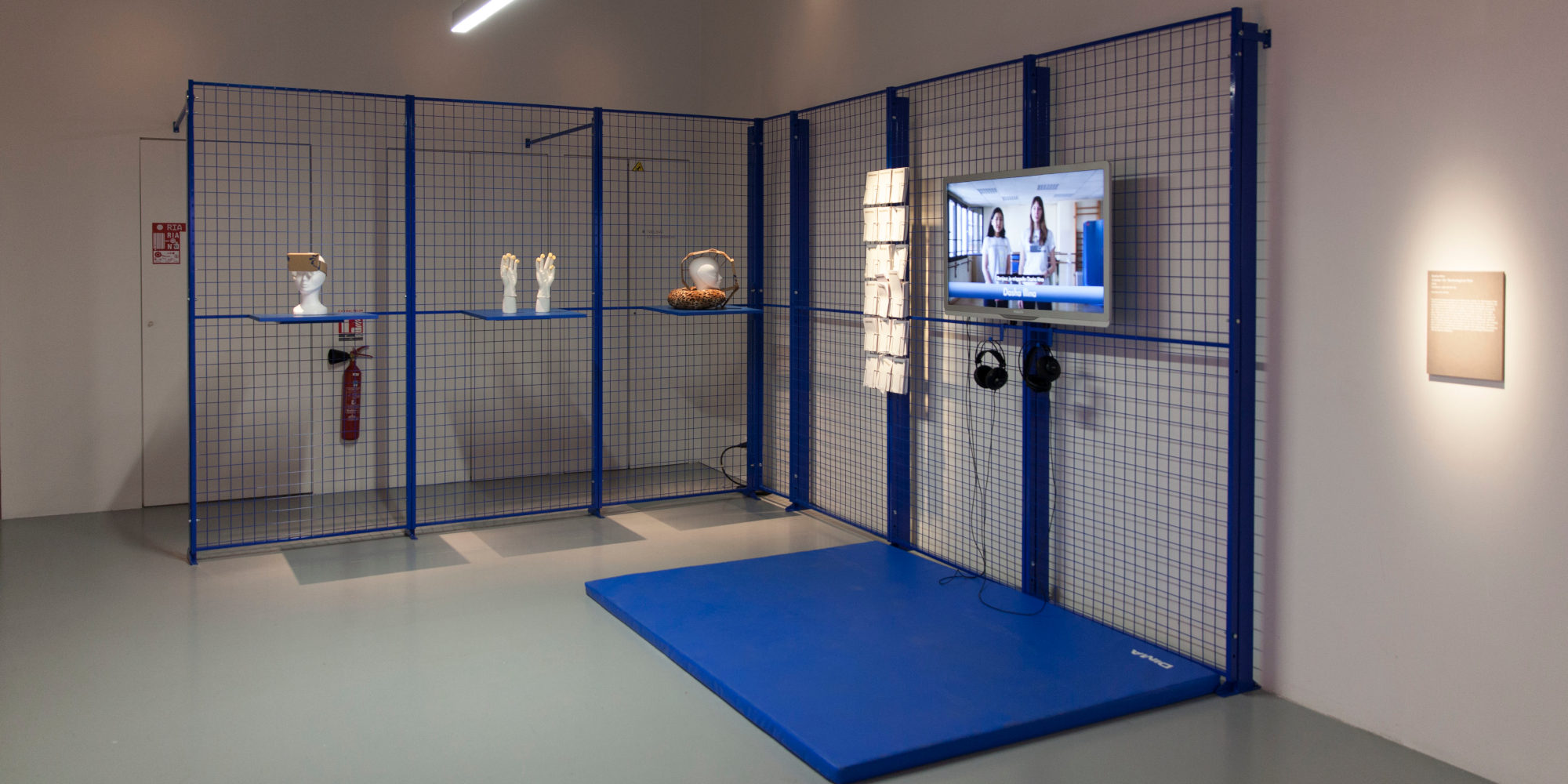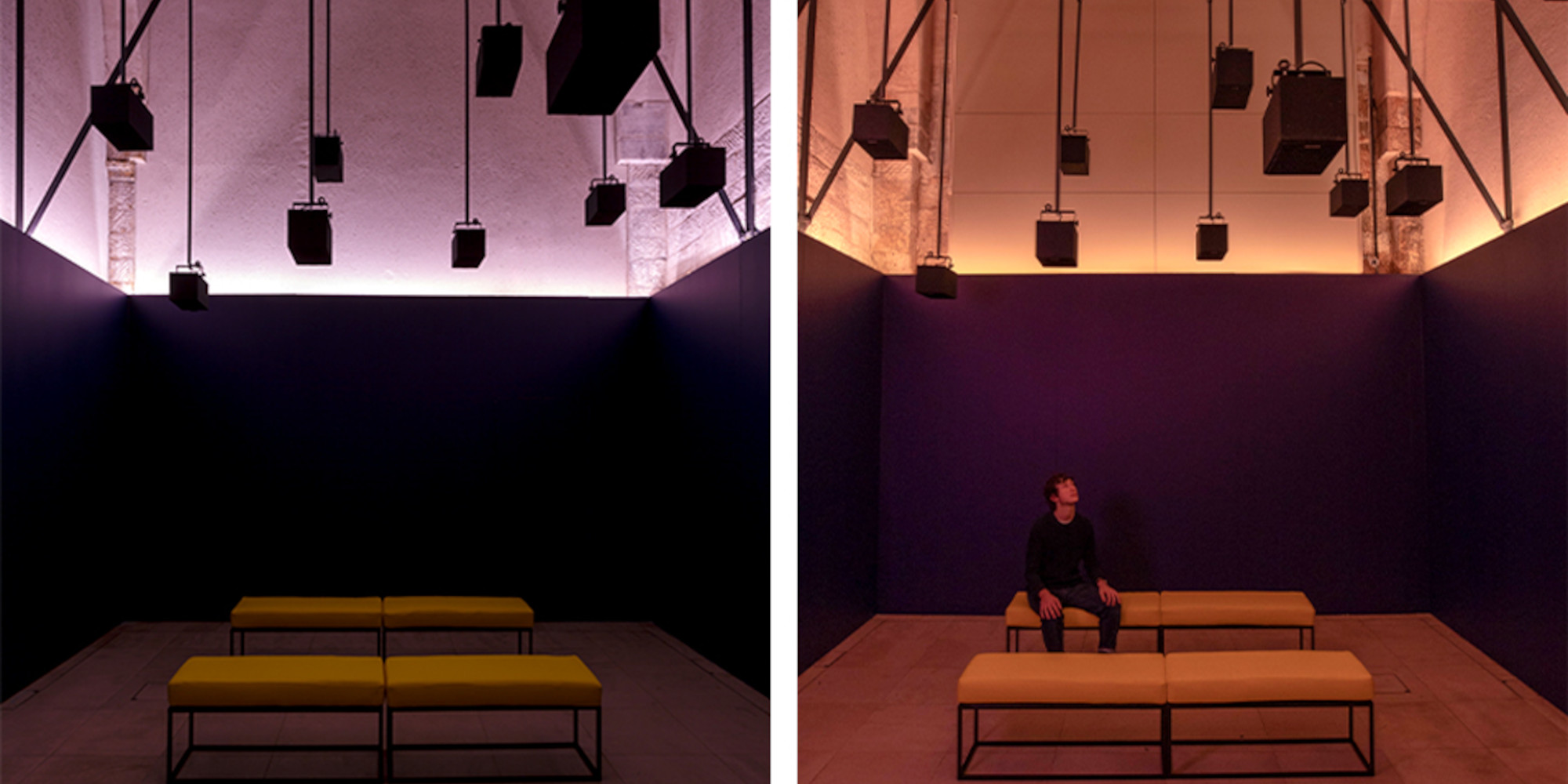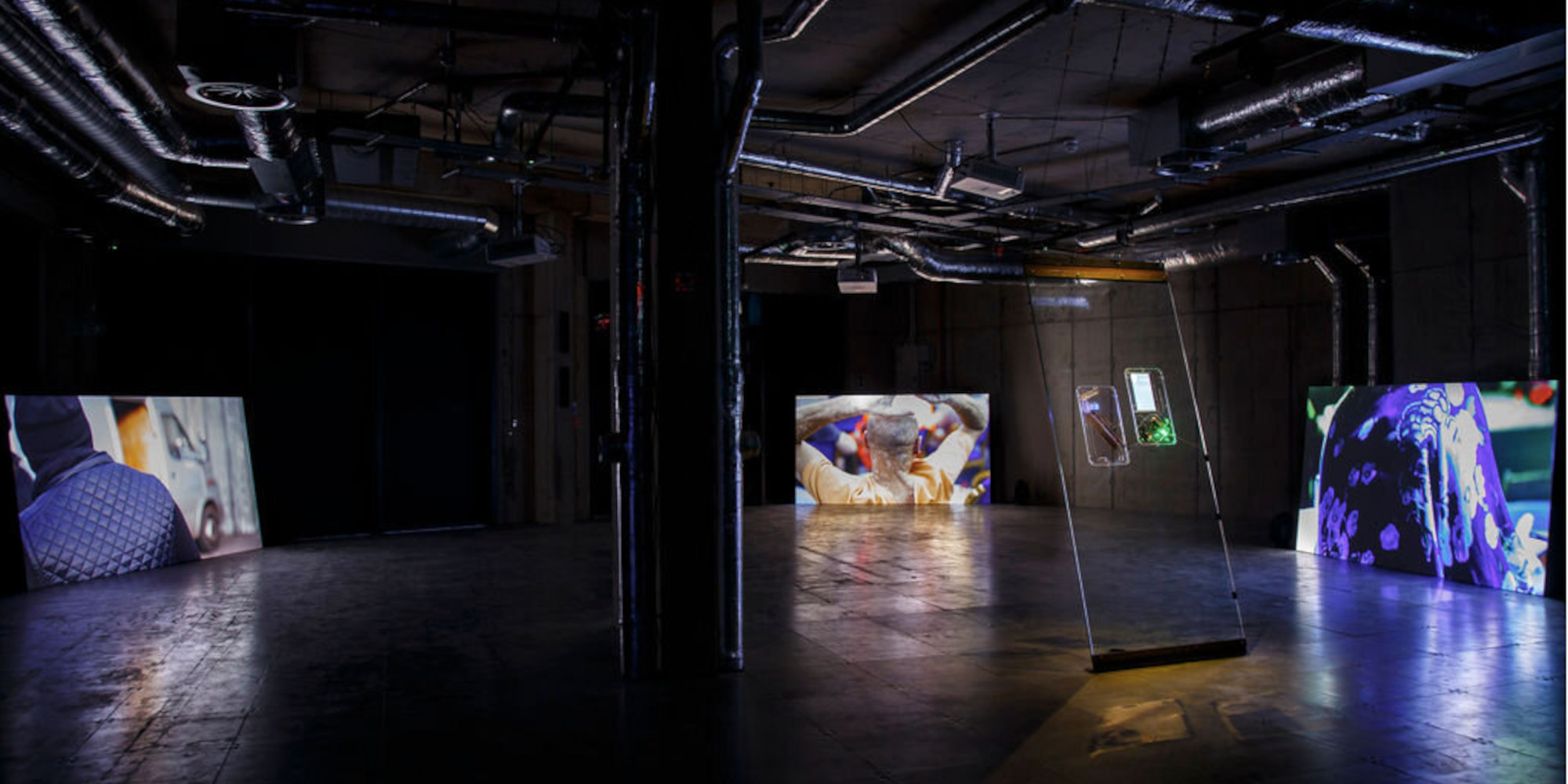Golden Nica
SOMEONE
Lauren Lee McCarthy (US)
What level of convenience and comfort does it take for us to be willing to forfeit our privacy and control over our lives to an AI system? SOMEONE is an interactive installation that illuminates the tension between intimacy and privacy as well as between comfort and autonomous action. Instead of a machine, SOMEONE responds to the wishes of the participating Smart Home residents. The project documentation shows these “human Alexas” operating their clients’ specially designed smart household appliances from a command center – while at the same time observing, eavesdropping on, and monitoring them.

Project Credits / Acknowledgements
lauren-mccarthy.com/SOMEONE
With support from Harvestworks and Google Artists and Machine Intelligence
Award of Distinction
Google Maps Hacks
Simon Weckert
At a walking pace, Simon Weckert pulls ninety-nine second-hand smartphones on which the Google Maps routing function is activated along the road in a handcart. The app interprets the devices’ slow forward progress as a traffic jam and thus changes the street display from green to a warning red. Google Maps then automatically redirects users to another route, meaning that the purely virtual traffic jam begins to have an impact on the real world. This and other actions by the artist reveal the influence navigation systems such as Google Maps and apps such as Airbnb and Tinder have on our perception of the world and how they guide our behavior unawares.

Project Credits / Acknowledgements
simonweckert.com/googlemapshacks.html
Award of Distinction
Shadow Stalker
Lynn Hershman Leeson (US)
Invisible surveillance deprives people of their civil rights as specially developed algorithms and data mining systems define people by race, economic factors, or gender. Lynn Hershman Leeson believes there is an urgent need to expose these tactics in order to stop the global damage they cause. Her work Shadow Stalker presents a film that sketches the history of predictive policing, digital identity theft, and the dangers of data mining. In the interactive part of the installation, visitors’ “digital shadows” are made public – comprising personal information generated in real time that can be retrieved from internet databases via an email address alone.

Project Credits / Acknowledgements
lynnhershman.com/project/shadow-stalker
Commissioned by: The Shed with additional funding from VIA Art Fund
Honorary Mention
Algorithmic Perfumery
Frederik Duerinck (NL)
This multisensory project calls into question the concept of mass production by envisioning a potential future personalized perfumery. The Algorithmic Perfumery evaluates completed customer questionnaires and uses the data to generate a unique scent. The respondents’ feedback on this personal perfume is then in turn fed back into the program to refine the compositions developed by the algorithm. By interacting with the machine, users are given the power to play an active role in the creative process: the machine learns from their personal physical experiences and subjective (olfactory) sensations.

Project Credits / Acknowledgements
algorithmicperfumery.com
Design: Vincent Soffers, Mark Meeuwenoord
Honorary Mention
Appropriate Response
Mario Klingemann (DE)
In Appropriate Response, Mario Klingemann questions the significance attributed to the written word per se. A participant kneels down at a “confessional,” and an AI system starts to generate a unique sequence of words – a “message” like those conveyed by aphorisms, quotations, or sayings in fortune cookies but which is created only once, i.e., supposedly only for the respective individual. Here the artist plays with the expectations, hopes, and fears that words can evoke in us, even if they have been created by a computer program. The way the interaction is staged deliberately recalls religious rituals and thus summons thoughts of the deeply human search for meaning.

Project Credits / Acknowledgements
onkaos.com/mario-klingemann
With support from: Colección SOLO
Honorary Mention
Center for Technological Pain
Dasha Ilina (RU)
The Center for Technological Pain (CTP) is a dummy company founded by Dasha Ilina to provide remedies for health problems caused by digital devices such as smart phones and laptops. Its products and services include homemade objects, self-defense techniques, yoga exercises, and workshops. The proposed open commons and DIY practices take a humorous approach to what is in face a serious contemporary problem: the ever-increasing space that digital technologies occupy in society and the negative impact they can have on our bodies.

Project Credits / Acknowledgements
Honorary Mention
Machine Auguries
Alexandra Daisy Ginsberg (GB)
We tend to overlook all too readily the impact that we humans have on the ecosystem. For example, light and noise pollution in densely populated areas have a massive influence on the behavior of birds. In an effort to adapt, they now sing earlier, louder, longer, or at a higher pitch. Alexandra Daisy Ginsberg would like to draw more attention to such changes brought about by human habitation. In her Machine Auguries, the audience experiences an immersive environment in which bird song changes with different lighting conditions at the various times of day. Real bird recordings are mirrored here by trained neural networks that instantly learn the songs and imitate them. In the end, we hear only artificially generated bird song that can no longer be distinguished from a real “twilight chorus.”

Project Credits / Acknowledgements
Commissioned by Somerset House and A/D/O by MINI.
With additional support from Faculty and The Adonyeva Foundation.
Honorary Mention
The Intimate Earthquake Archive
Sissel Marie Tonn in collaboration with Jonathan Reus (DK)
This work is both an ongoing research project and an interactive installation dealing with earthquakes of human causation in the Dutch province of Groningen. To draw attention to the problems in the region – one of Europe’s largest natural gas fields – as well as to the general effects of our exploitation of fossil fuels, The Intimate Earthquake Archive invites visitors to experience “deep listening.” To this end, Sissel Marie Tonn has found a way to let visitors feel the vibrations caused by earthquakes in their own bodies. For the presentation in the exhibition, sound artist Jonathan Reus has created a ten-minute tactile composition from the seismic data of a recorded earthquake, which can be heard and felt via a “tactile vest.”

Project Credits / Acknowledgements
jonathanreus.com/portfolio/the-intimate-earthquake-archive
Hardware design/Interaction: Marije Baalman & Jonathan Reus, Carsten Tonn-Petersen
Vest design: Gino Anthonisse and Christa van der Meer
Graphic Design: Márton Kabai
With support from: Theodora Niemeijer Fund, Van Abbemuseum, TNO – Innovation for Life, KNMI, Artefact festival, Stroom Den Haag, Stimuleringsfonds NL
Honorary Mention
Trickle Down, A New Vertical Sovereignty
Helen Knowles (GB)
In the installation documented here, which originally consisted of a four-channel video projection, a transparent coin machine, and a generative soundscape, Helen Knowles subtly lays bare the mechanisms of technological and financial power structures. Every time a coin is inserted into the machine, it triggers automated payments in cryptocurrency to all persons involved in the project, from auction participants and artists to people who helped to realize the installation. Together they form a “trickle-down community” in which everyone receives equal shares of the artwork in recognition of the (invisible) work they have done.

Project Credits / Acknowledgements
helenknowles.com/index.php/work/trickle_down
Supported using public funding from Arts Council England. The artwork is produced by FutureEverything with additional support from Whitworth Gallery, The University of Manchester, arebyte Gallery, FACT and One London Bridge.


